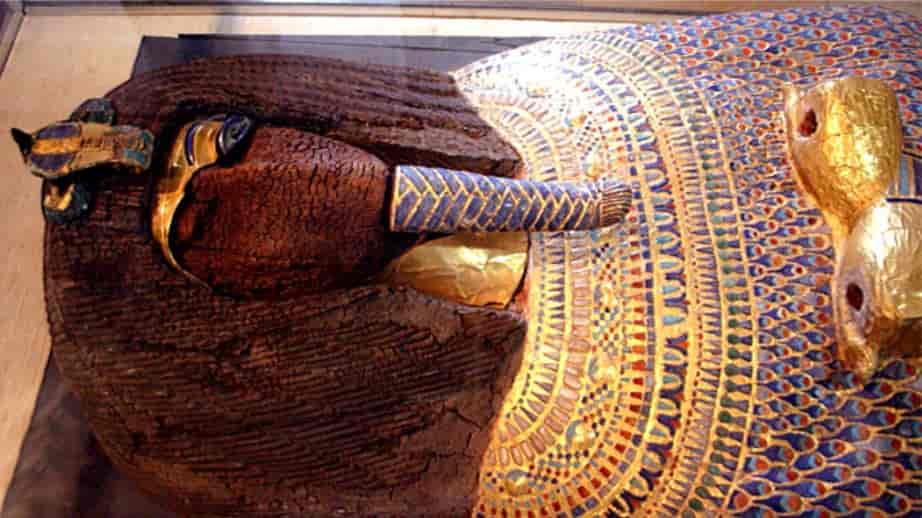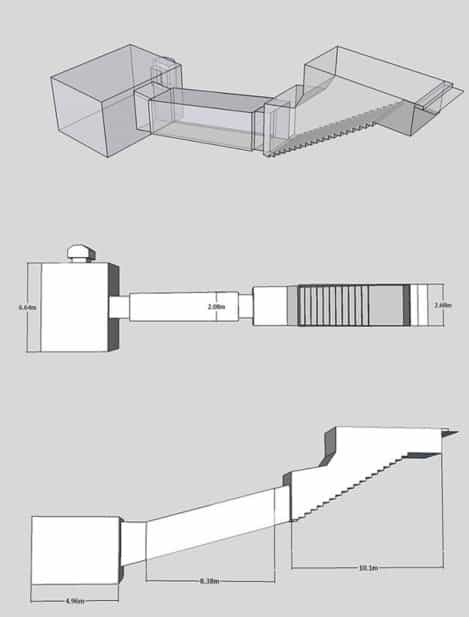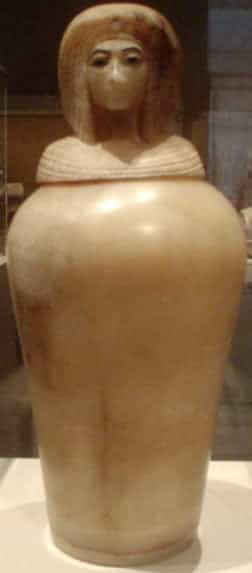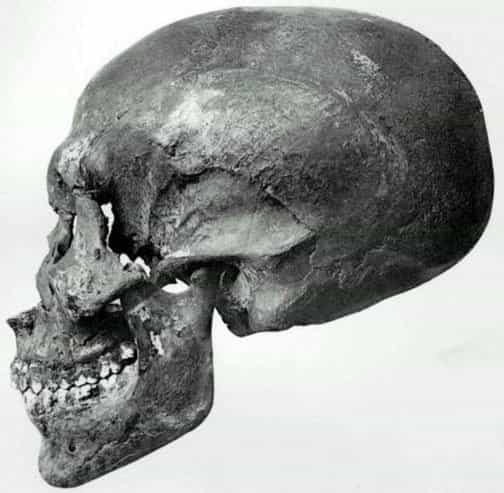Tomb KV55 in the Valley of the Kings was discovered by Edward R. Ayrton on January 6, 1907. Ayrton’s sponsor, Theodore M. Davis, published a summary of the excavation (The Tomb of Queen Tiye) in 1910.

KV55 is from the 18th dynasty, being a problematic archaeological site as it seems to have been used for several burials: the first is attributed to Queen Tiye, based on the broken wooden shrine dedicated to her (Tiye was brought here after the abandonment of Amarna, and finally brought to KV35).
The mummy found here may be that of her son, the pharaoh Akhenaten, although that of his successor, Smenkhkare (if this was a man) was also considered.
In 1923, Harry Burton used it as a darkroom to develop his photographs during the excavation of Tutankhamun’s tomb by Howard Carter.
Egyptian Tomb KV55: Description
KV55 is a relatively small royal tomb, its total length is only 27.61 meters. It is located next to KV6, the tomb of Ramses IX , above KV7 (of Ramses II) and near KV62, the tomb of Tutankhamun.
Its entrance is open in the rock, heading east. It leads to a system of stairs that lead to a slightly sloping corridor and the burial chamber.
On the south side of this chamber there is passage to a small antechamber, and red masonry markings on the east wall indicate the planning of another room, which had it been built would have matched the layout of Tutankhamun’s tomb.

Although the walls of the tomb are laid out in plaster, which is unusual for a royal tomb, they are not decorated. A drawing on an ostracon found by Lyla Pinch Brock in 1993, has been interpreted as the plan of the tomb, suggesting that its original entrance had been enlarged, corroborated by the marks found on the walls of the tomb.
The place was altered in antiquity, and therefore it is difficult to interpret. Evidence from the tomb complicates its attribution.
The door seals bore Tutankhamun’s name, evidently from the time its tenant was buried a second time; the canopic jars found in the tomb are similar to those of Akhenaten’s secondary wife, Kiya; the broken shrine, whose panels are distributed throughout the chamber, bear the name and representations of Akhenaten’s mother, Queen Tiye.
Akhenaten’s name appears in a series of “magical bricks” found in the tomb, as well as that of his father, Amenhotep III, and his daughter and wife.
All these data are reminiscent of the main figures of the Amarna period, hence the popular name of the tomb: the Amarna cache.
It is thought that the tomb was initially designed for the burial of some nobleman or official, using it later for a royal burial, as later happened with the tomb of Tutankhamun.

One of the four Egyptian alabaster canopic jars found in KV55, depicting what is thought to be the likeness of Queen Kiya
Identification of the mummy
When the tomb was opened in 1907 the only mummy found inside was that of a male. This mummy was thought to be Akhenaten, due to the presence of some funerary items (mainly magical bricks) as well as the vandalism of the sarcophagus (Akhenaten was later vilified as a heretic).
The cartouches with the mummy’s name are erased and the uraeus removed. In addition, the mummy has several similarities to that of Tutankhamun’s.

Profile view of the skull recovered from KV55
This identification was not fully accepted because although KV55 does not contain any mention of Smenkhkare, some insisted on identifying the mummy with him. DNA analysis in 2010 confirmed that it was the remains of the famous Akhenaten.
Nicholas Reeves suggests a theory: Akhenaten and his mother, Queen Tiy, were originally interred in the new capital, Amarna, but their bodies were transferred to KV55 during the reign of Akhenaten’s son Tutankhamun and his secondary wife, Kiya.
The door was sealed with the name of Tutankhamun. There the mummies remained for about 200 years, until the tomb was discovered by workers excavating the nearby tomb of Ramses IX..
At that time Akhenaten was despised as the heretic king, so the sarcophagus of Queen Tiye was hastily removed from his desecrating presence, except for the gilded wooden shrine that covered it, which had to be dismantled to remove the sarcophagus.
The portraits of Akhenaten were erased with a chisel, in his sarcophagus the golden mask was torn and the cartouche with his name removed, to condemn him to eternal oblivion. As a final insult, a large rock was thrown at the coffin, smashing the supports of the lion-shaped sarcophagus.





